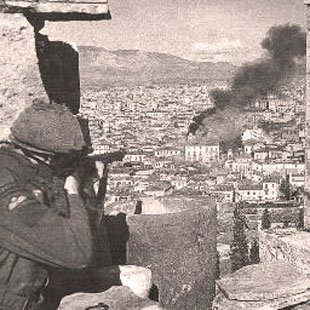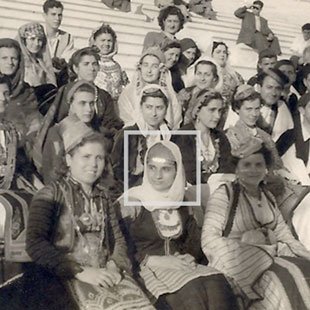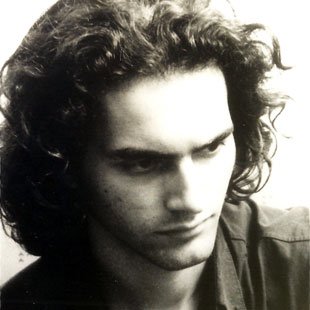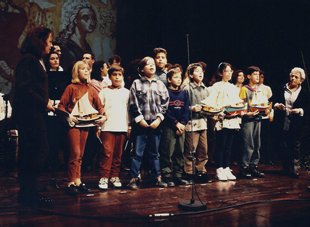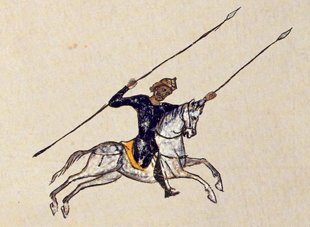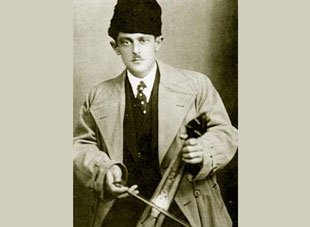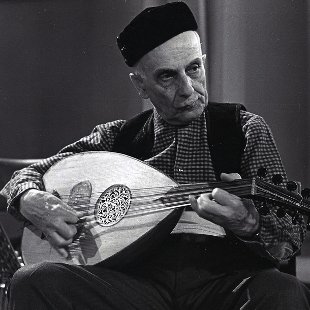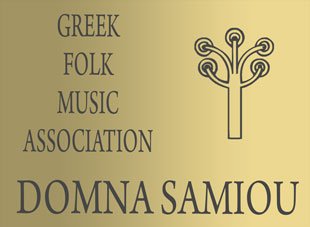You are at: Home page Her Work Discography Songs of Cappadocia
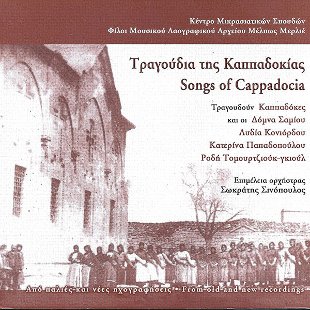
Songs of Cappadocia

Contents
Songs
-
1. The Holy Days Have Come
Cappadocia / Konya More
-
2. Pilgrim's Song
Cappadocia / Konya More
-
3. New Year Carol
Cappadocia / Konya More
-
4. Easter Song
Cappadocia / Konya More
-
5. I Beg You, Blessed Virgin
Cappadocia / Konya More
-
6. Pilgrim's Song
Cappadocia / Konya More
-
7. Wedding Procession Song
Cappadocia / Konya More
-
8. Three Carols: Palm Sunday - Lazarus day - Epiphany
Cappadocia / Konya More
-
9. The Castle of Marou
Cappadocia / Konya More
-
10. Let Our Friends Rejoice
Cappadocia / Konya More
-
11. The Nine Brothers
Cappadocia / Konya More
-
12. The Tale Of St. Alexios
Cappadocia / Konya More
-
13. The Three Noblemen
Cappadocia / Konya More
-
14. Bring Back My Love
Cappadocia / Konya More
-
15. One Dark Starless Night
Cappadocia / Konya More
-
16. A Widow Bore a Child
Cappadocia / Konya More
-
17. For The Adornment Of The Bride
Cappadocia / Konya More
-
18. A Slave in the Gallery Sighed
Cappadocia / Konya More
-
19. The Bridge of Adana
Cappadocia / Konya More
-
20. St. George and the Dragon
Cappadocia / Konya More
-
21. Let Us Dance Around
Cappadocia / Konya More
-
22. Aĝlama
Cappadocia / Konya More
-
23. This Day Is Ours
Cappadocia / Konya More
-
24. The Golden Loom
Cappadocia / Konya More
-
25. Ben Atimi
Cappadocia / Konya More
-
26. Two Suns Two Moons
Cappadocia / Konya More
-
27. Lullaby
Cappadocia / Konya More
- Production: Φίλοι του Μουσικού Λαογραφικού Αρχείου Μέλπως Μερλιέ
- Year of release: 2002
- Type: CD
- Production Country: Greece
Notes
The following list contains statistical information on the native villages of the above singers. The list was compiled mainly on the basis of data provided by S. Pharassópoulos in his book on Sýlata (Athens 1895). The figures in column 3 show the number of school grades available to youngsters in each village.
Population Greeks Education
Anakoú: 2.800 1.100 6
Malacopí: 2.000 1.600 10
Potámia: 900 800 6
Sinasós: 5.000 4.000 11
Sýlata: 1.100 800 7
Fárassa: 600 585 6 (;)
Floytá: 3.200 2.800 –
The area considered to be Cappadocia today roughly lies within the triangle made by the three cities of Kesária to the north, Ak Sarai southwest of there and Nigdi southeast. In the past the area was considerably larger, extending as far north as the Black Sea. The region was inhabited from ancient times, with the first probable settlers being Hittites. It was in the path of commercial routes to the East and was used by the Assyrians as well as others.
Wood is scarce in this area; therefore the first cone dwellers found it easier and less expensive to hollow out homes in the soft rock. It is evident that one of the earliest Christian communities existed here as Peter, Christ’s apostle, sends greetings to the Cappadocians in the first of his epistles. During the early years of Christianity and in the Byzantine era the hollowed-out cones were often used as monasteries, monks’ cells and churches. Some of the influential leaders in early church decisions came from here as well as two saints: St. Mámas, the beloved saint of wild animals, and St. George, the dragon slayer.
After the settling of Turkish peasants in the region, Greek and Turk lived peacefully together, and, in fact, continued to do so until 1924 when the Greek inhabitants were re-settled in Greece according to the Treaty of Lausanne. These transplanted Cappadocians nostalgically remember their former homeland and many of their offspring have returned to find their ancestral homes. More often than not they have been joyfully welcomed by descendants of their former neighbors.
As with the Pontic Greeks, the Cappadocian Greeks were settled in various sites throughout the Greek mainland -mainly, however, in Thessaly, Macedonia and Thrace- sometimes in existing villages, sometimes in newly created villages to accommodate refugees. They were often ridiculed and treated badly. Many did not speak Greek; for some Turkish had become their first language, but they still utilized Greek in the church liturgy. Not only did they have to overcome the language difficulty, but also endured great changes in climate, profession and life in general.
Traditions also suffered as a result of the uprooting of the Cappadocians. For many their main celebrations had centered around a particular church in their village or region. As they no longer had contact with that particular church there was no reason to hold the celebration. Some dances were performed only on those specific occasions. In time many of them were lost as there was no need for their performance.
Dances and celebrations varied somewhat from village to village depending on the particular feast days which were celebrated. For instance, the five villages in the Fárassa region had two main times when they danced: Άϊ-Vassilis (St. Basil’s day, 1 January) and Easter. The special celebrations in Potámia took place on 3 November (Άϊ-Yiorgi), Christmas and Easter. Indeed, all villages celebrated at Easter, but other celebrations were not necessarily the same.
From Easter to Ascension Day slow circle dances with very ancient roots were performed. Sometimes these dances were known by names descriptive of the formation: Makroulós, long-line; Strongilós, circular; Stavrotós, cross handhold. The steps for most of these were the same, known as Ίsos.
The most popular dance in all the villages seems to have been the karsilamás. The rhythm for this “karsilamás” is not 9/4 or 9/8 as is usually associated with dances of this name. Rather, it is 2/4, accented as quick-quick-slow. If wooden spoons were not available some dancers would accompany themselves with small glasses held on two fingers of each hand and “clinked” together in time with the music.
Although the karsilamás is a couple dance it is rarely danced by members of the opposite sex together. This dance was always performed by pairs of men or pairs of women. Only at family parties would a man if he wanted to, take his wife or his sister to dance. However, neither one should dance very close to the other. It was shameful if a man and woman danced together who were not related in some way.
The slow circle dances were unaccompanied by musical instruments. Quicker dances were performed to the songs by the participants playing the wooden spoons or tambourines (défia). In some villages musicians existed; in others they did not. As in other regions of Greece musicians were hired from neighboring villages when the situation warranted, i.e. at weddings. Sometimes musicians came from other villages bringing their own, instruments.
Today the Cappadocian Greeks and their descendants celebrate in much the same way in their new surroundings as they did in the old. The favorite dance is still the karsilamás, accompanied by wooden spoons, glasses or anything else available. More often today they also have accompaniment from various instruments. In addition to those of their own traditional dances which have remained, they usually dance the “pan-hellenic” dances as well as the local dances of the region.
Notes
1. In our musicological commentaries, modes are given in the movable C system, an alphabetical variant of movable do. These modes are to be taken as modulations of the ones playable “on the white keys of the piano”, but regardless of absolute pitch. Needless to say, semitones, tones and augmented seconds of Greek and Eastern music are not equally tempered, nor are they all one standard size each.
2. All directly transliterated Greek words and proper names are to be taken as stressed on the penultimate syllable, unless otherwise designated by accentuation.
Credits
Singers
- Domna Samiou (Singer),
- Lydia Koniordou (Singer),
- Katerina Papadopoulou (Singer),
- Rodi Tomurcuk Gül (Singer)
Production team
- Markos Ph. Dragoumis (Επιμέλεια ενθέτου, παραγωγής, έκδοσης ),
- Thanassis Moraitis (Επιμέλεια ενθέτου, παραγωγής, έκδοσης ),
- Socrates Sinopoulos (Orchestra direction)
Singer
- Domna Samiou (A Widow Bore a Child, The Bridge of Adana, The Golden Loom),
- Lazarus Hatzinis (Pilgrim's Song, Easter Song, Pilgrim's Song),
- Maria Hatzitheodorou (The Castle of Marou, Let Our Friends Rejoice, The Nine Brothers, The Three Noblemen),
- Anastasia Hourmousiadi (Bring Back My Love, One Dark Starless Night),
- Harícleia Kanaki (New Year Carol, I Beg You, Blessed Virgin, Wedding Procession Song),
- Lydia Koniordou (For The Adornment Of The Bride, Let Us Dance Around, Two Suns Two Moons, Lullaby),
- Panayotis Kounteperidis (Pilgrim's Song, Easter Song, Pilgrim's Song),
- Katerina Papadopoulou (A Slave in the Gallery Sighed, St. George and the Dragon, This Day Is Ours),
- Rodí Tomurcukgül (Aĝlama, Ben Atimi),
- Maria Tourgouti (The Holy Days Have Come),
- Paraskevás Tsaloglou (Mezarcik) (Three Carols: Palm Sunday - Lazarus day - Epiphany),
- Anna Tsiklitari (The Tale Of St. Alexios)
Violin
- Yiorgos Marinakis (The Golden Loom, A Slave in the Gallery Sighed, St. George and the Dragon, Let Us Dance Around, Aĝlama, This Day Is Ours, Ben Atimi, Two Suns Two Moons)
Constantinopolitan lyra
Kanun
- Panos Dimitrakopoulos (A Widow Bore a Child, The Bridge of Adana, The Golden Loom, St. George and the Dragon, Aĝlama, This Day Is Ours, Ben Atimi)
Constantinopolitan lute
- Socrates Sinopoulos (The Golden Loom, St. George and the Dragon, Aĝlama, This Day Is Ours, Ben Atimi, Two Suns Two Moons)
Saz
- Socrates Sinopoulos (A Widow Bore a Child, The Bridge of Adana, For The Adornment Of The Bride, Let Us Dance Around),
- Kyriakos Tapakis (St. George and the Dragon, Aĝlama, This Day Is Ours, Ben Atimi)
Kemane
Oud
- Kyriakos Tapakis (A Widow Bore a Child, The Bridge of Adana, The Golden Loom, For The Adornment Of The Bride, Let Us Dance Around, Two Suns Two Moons)
Goblet drum
Bendir (frame drum)
Daire (frame drum)
- Manousos Klapakis (The Bridge of Adana, For The Adornment Of The Bride, Let Us Dance Around, Two Suns Two Moons)
Zil bells
Spoons
Informant (source of the song)
- Lazarus Hatzinis (Pilgrim's Song, Easter Song, Pilgrim's Song),
- Maria Hatzitheodorou (The Castle of Marou, Let Our Friends Rejoice, The Nine Brothers, The Three Noblemen),
- Anastasia Hourmousiadi (Bring Back My Love, One Dark Starless Night, St. George and the Dragon, Two Suns Two Moons),
- Harícleia Kanaki (New Year Carol, I Beg You, Blessed Virgin, Wedding Procession Song),
- Panayotis Kounteperidis (Pilgrim's Song, Easter Song, Pilgrim's Song),
- Maria Tourgouti (The Holy Days Have Come),
- Paraskevás Tsaloglou (Mezarcik) (Three Carols: Palm Sunday - Lazarus day - Epiphany, Ben Atimi),
- Anna Tsiklitari (The Tale Of St. Alexios)
